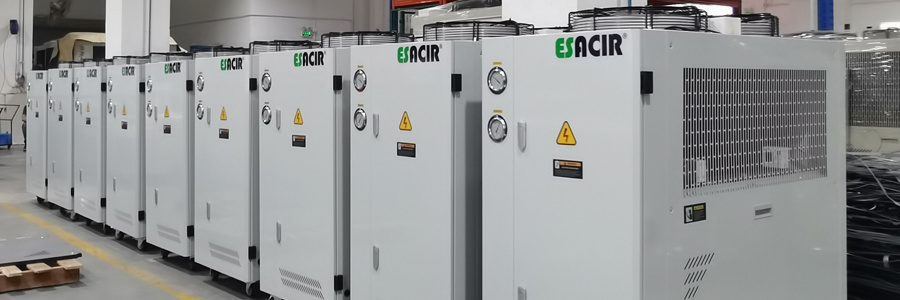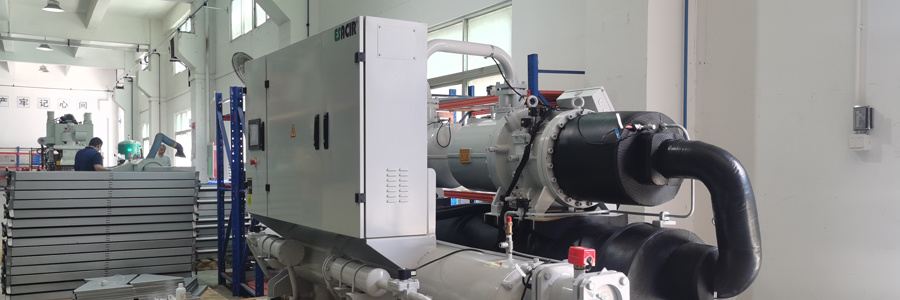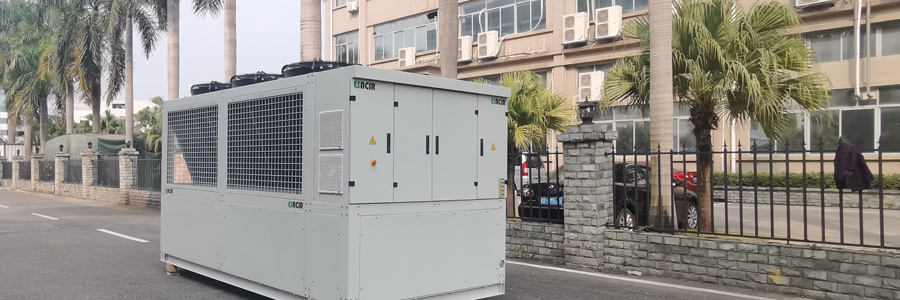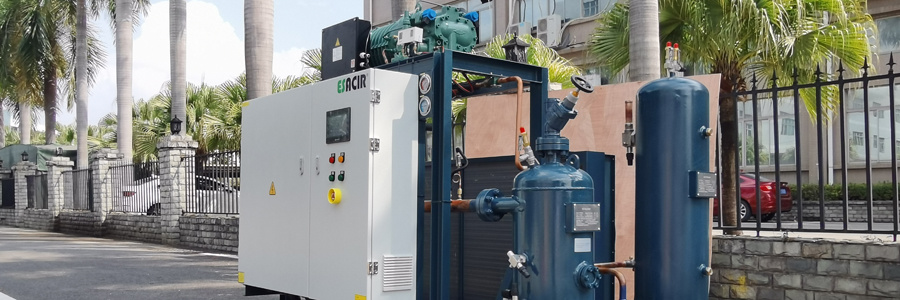In air conditioning engineering, industrial production and scientific experiments, the refrigeration device is used to indirectly cool the cooled objects, or the cold amount produced by the refrigeration device is transported over a long distance. An intermediate substance is needed to be cooled in the evaporator, and then it is used to cool the cooled objects. This intermediate substance is called the secondary refrigerant or refrigerating medium.

1.The requirements of the secondary refrigerant
1) No solidification and gasification within the working temperature range.
2) The specific heat is large, so that the load cooling amount of the refrigerant is large, and the flow rate of the refrigerant is small, the diameter of the pipeline and the size of the pump is reduced, and the power of the circulating pump is reduced.
3) Low density, low viscosity, can reduce flow resistance.
4) High thermal conductivity, good heat transfer performance, to reduce the heat transfer area of the heat exchanger.
5) No corrosion to metal, no combustion and explosion, non-toxic, no stimulation to human body, good chemical stability.
6) Easy to buy and cheap.
2.The common refrigerating medium or secondary refrigerant
1) Air
The advantage of using air as secondary refrigerant is that it is everywhere, easy to obtain, and does not require complex equipment; Its disadvantage is less than heat, so it is used only when air is used for direct cooling. In cold storage, the air inside the storage is used as a secondary refrigerant to cool food.

2) Water
Water has the advantages of high specific heat, non-toxic, no combustion, no explosion, good chemical stability, easy to obtain, etc. Therefore, water is widely used as secondary refrigerant in air-conditioning and refrigeration systems, but water has a high freezing point, so it can only be used to make secondary refrigerant above 0℃.
3) Brine water
Brine water can be used as secondary refrigerant for refrigeration temperature below 0℃. The salt used to prepare brine is sodium chloride (Nacl), calcium chloride (CaCl2), magnesium chloride (MgCl2). Brine water commonly used as secondary coolant is sodium chloride (NaCl) aqueous solution and calcium chloride (CaCl2) aqueous solution.

4) Organic solution
Some corrosive secondary refrigerant is not allowed to use occasions can use methanol, ethylene glycol, propylene glycol and other aqueous solutions. Colorless, tasteless liquid, low volatility, low corrosion, easy to mix with water, slightly toxic, but harmless; Used in industrial refrigeration and ice storage air conditioning system. Its aqueous solution is corrosive to metals, and additives (preservatives, stabilizers) are needed when it is used.
Use of concentration: solidification temperature is 5~6℃ lower than the evaporation temperature to determine the concentration of the solution.
3. Notes when choosing saline or brine water solution
The greater the concentration of solution and greater the density, the greater the flow resistance, but the specific heat decreased, for the same cooling capacity transport, the need to increase the flow; As long as the salt water solution in the evaporator is not frozen, the solidification temperature need not be too low.
1) Open type evaporator: 4~5℃ lower than the evaporation temperature
2) Enclosed type evaporator: 8~10℃ lower than the evaporation temperature
3) The concentration should not be greater than the concentration of crystallization point.

4. Precautions for operation of saline or brine water solution system
The concentration of brine water should be measured regularly and its design concentration maintained: the constant absorption of water from the air by salt water will reduce the concentration of salt water and increase its solidification temperature.
Saline or brine water solution: strong corrosion to metals
Sodium chloride: Can be used for direct contact food refrigeration
Calcium chloride and sodium chloride are corrosive to metals, so sodium chromate should be used as corrosion inhibitor. Usually, 1.6kg sodium dichromate and 0.432kg sodium hydroxide are added to each cubic calcium chloride solution, and 3.2kg sodium dichromate and 0.864kg sodium hydroxide are added to each cubic sodium chloride solution.


